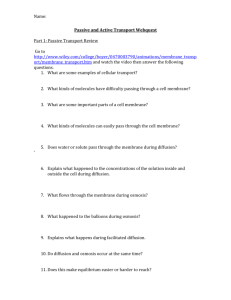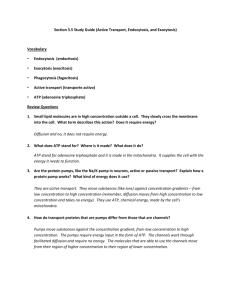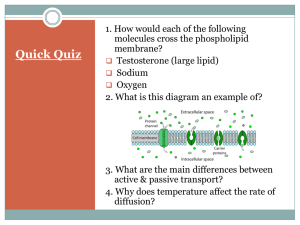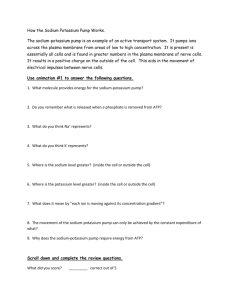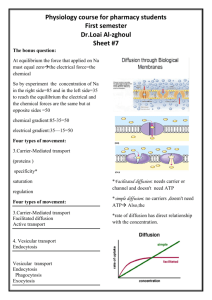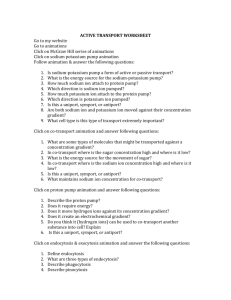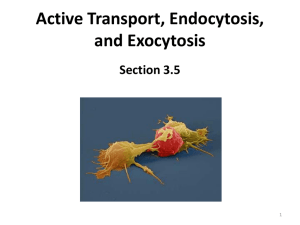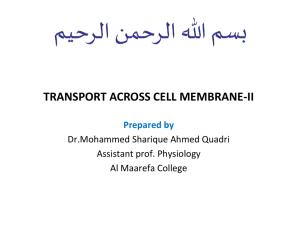Active Transport: Endocytosis, Exocytosis, Ion Pumps
advertisement
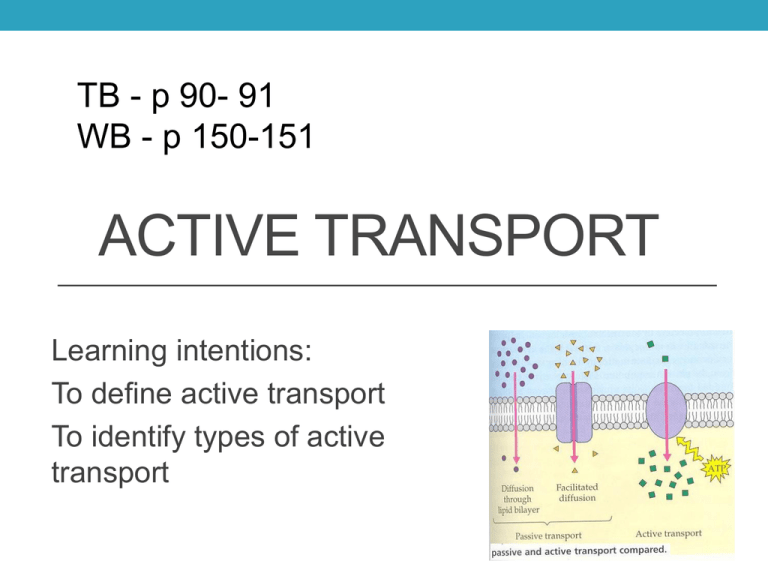
TB - p 90- 91 WB - p 150-151 ACTIVE TRANSPORT Learning intentions: To define active transport To identify types of active transport Active Transport Why is it ‘Active’? • Energy (ATP) required ATP is short for Adenosine tri phosphate • ATP is considered by biologists to be the energy currency of life. • It is the high-energy molecule that stores the energy we need to do just about everything we do. • It is present in the cytoplasm of every cell, and essentially all the physiological mechanisms that require energy to work obtain it directly from the stored ATP. • As food in the cell is used up, the released energy is used to re-form the ATP molecule so that the cell always maintains a supply of this essential molecule Active transport is • The movement of substances from an area of low concentration to an area of high concentration. Ie Against the concentration gradient http://www.youtube .com/watch?v=STz OiRqzzL4&NR=1 Three types of Active Transport 1. Endocytosis 2. Exocytosis 3. Ion Pumps Look these terms up in your TB and write down their definitions Endocytosis • Movement into the cell (enter) • Phagocytosis – “cell eating” A food vacuole is formed • Pinocytosis – “cell drinking” A Fluid vesicle is formed • E.g. An Amoeba drinking • Animation of endocytosis Cytosis: movement of large molecules through the cell membrane; requires ATP Exocytosis Cytosis: movement of large molecules through the cell membrane; requires ATP • Movement out of the cell (exit) • Vesicles bud off from golgi apparatus or ER, vacuole fuses with cell membrane and expels contents • Secretions e.g. digestive enzymes released, glands • Animation of exocytosis Vacuole • Exocytosis • Or • Endocytosis? Do WB p151 TB - p 90- 91 WB - p 150-151 ACTIVE TRANSPORT (2) Learning intentions: To define ion pump transport To identify types of ion pumps Ion Pumps (WB150) Ion: a charged particle • Proteins in the cell membrane can actively accumulate specific ions on one side of the membrane to control the amount • Animation of an ion pump Example 1 –Proton Pump A protein is pumping Hydrogen Ions (protons). It is a proton pump. 14 Active transport model animation Example 2 – Sodium Potassium Pump Example 3 - Cotransport When water is pumped uphill, the energy it creates as it moves freely downhill can be used. The same occurs in cells – Co transport 1. A molecules is first pumped against its concentration gradient 2. It then diffuses back 3. The energy created by its diffusion is used to pump another molecule against its concentration gradient 1. 2 3. Do page 150 in WB
